On March 19, 2019, the National Parks Board (NParks) announced the opening of a brand new Nature Playgarden at HortPark.
It is aimed at improving child learning development and encouraging nature-based learning.
The playgarden will also serve as a test site for researchers to develop better guidelines on the construction of other similar playgardens in the future.
Digital generation
You may have noticed an increasing number of children these days hooked on electronic devices such as iPads and iPhones.
According to Channel News Asia, Singaporean children have the highest rate of digital utilisation among Southeast Asia countries -- more than seven in 10 children between the ages of three and eight use their parents’ devices.
Although parents may use these devices to encourage learning through digital apps, there may be cause for concern.
Increased screen time could potentially lead to lower IQ, the same article stated.
Nurturing biophilia
NParks' new Nature Playgarden hopes to subvert this trend.
The playgarden is part of NParks' Biophilic Playgarden Plan.
The plan was specifically designed for pre-schoolers, and centres around the concept of biophilia, which refers to the innate connection between humans and nature.
NParks hopes that from playing amidst greenery, a greater appreciation of nature, biodiversity and the outdoors can be cultivated in younger generations from an early age.
"We're very connected to the digital realm and our children too. Yet research has shown that outdoor play has benefits for our children cognitively, physically and emotionally," said Minister for Social and Family Development, Desmond Lee, who opened the playgarden.
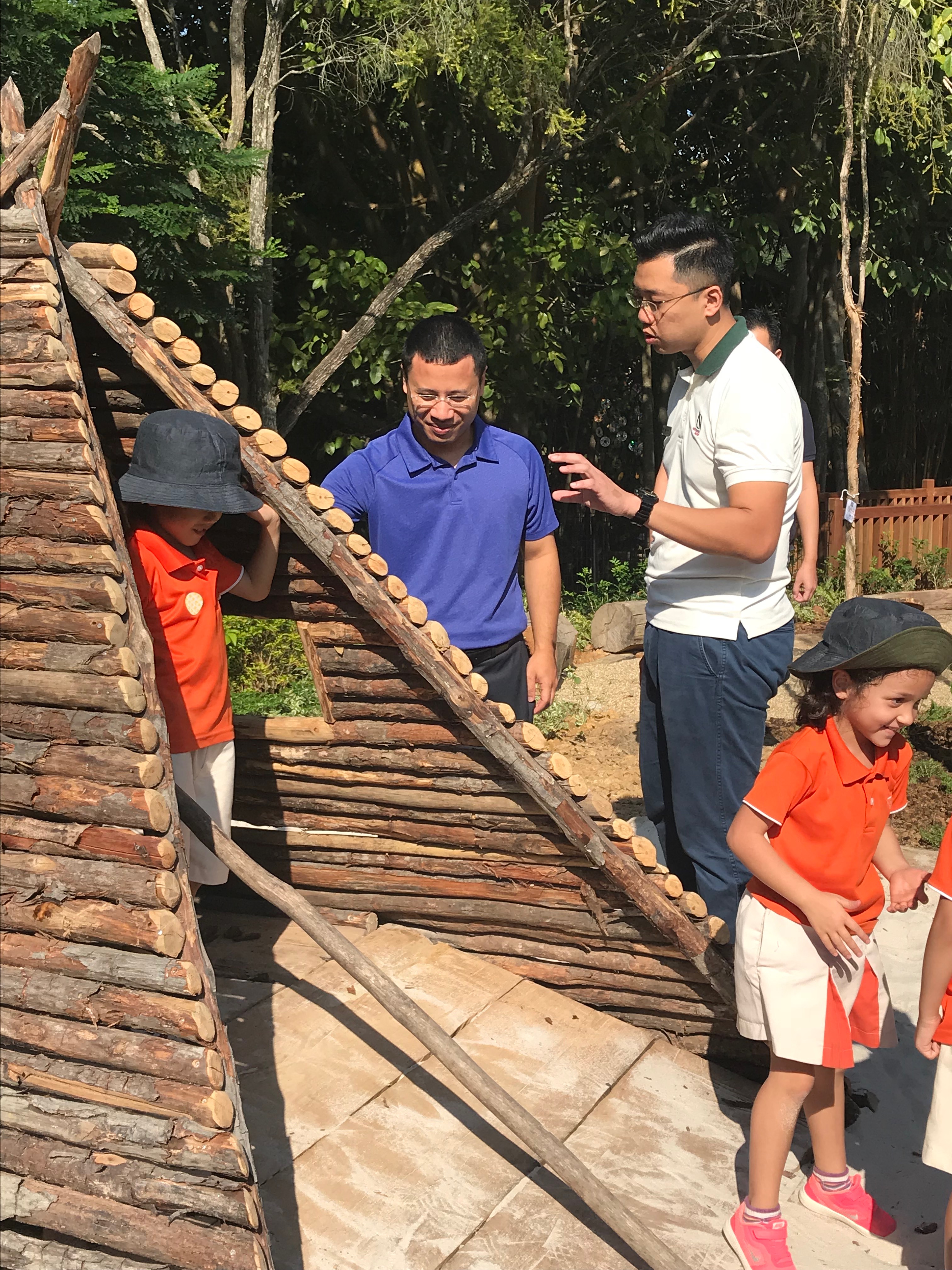 Minister Desmond Lee watching pre-schoolers interact with the playgarden's features.
Minister Desmond Lee watching pre-schoolers interact with the playgarden's features.
"We would like our preschools to use the outdoors as an open classroom," he continued.
The Nature Playgarden
Playgrounds located in urban areas are a common sight.
The Nature Playgarden, however, is a stark contrast -- it is completely surrounded by greenery, tucked away in the middle of HortPark.
The entire area spans 0.35 ha, roughly half the size of a football field.
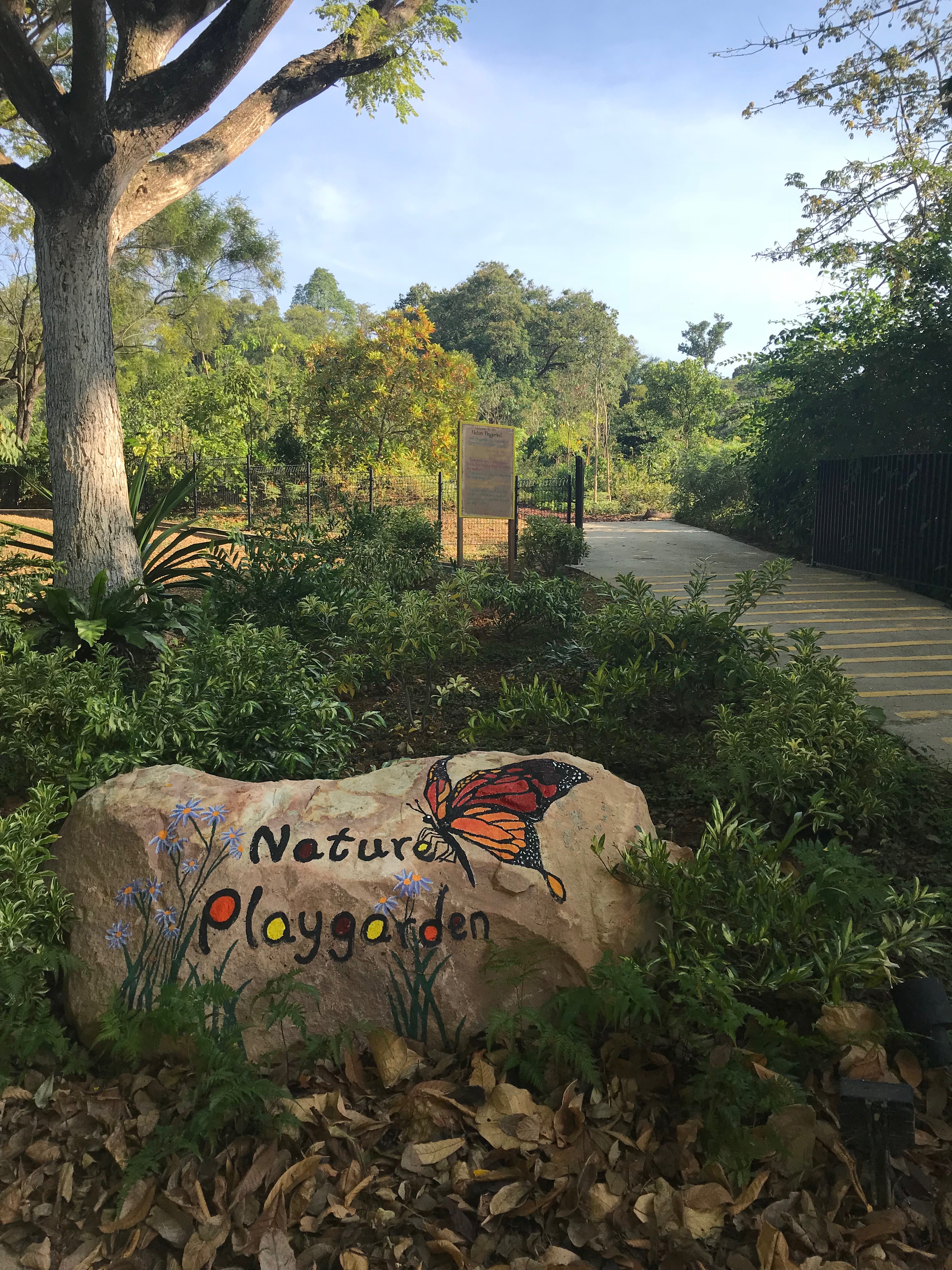
The place is large and open with plenty of space for children to explore and run amok.

Various types of plants and shrubbery, such as the native Dillenia suffruticosa and cocoa tree, have been planted around the area.
Small signs bearing the species names can help children identify them as well.
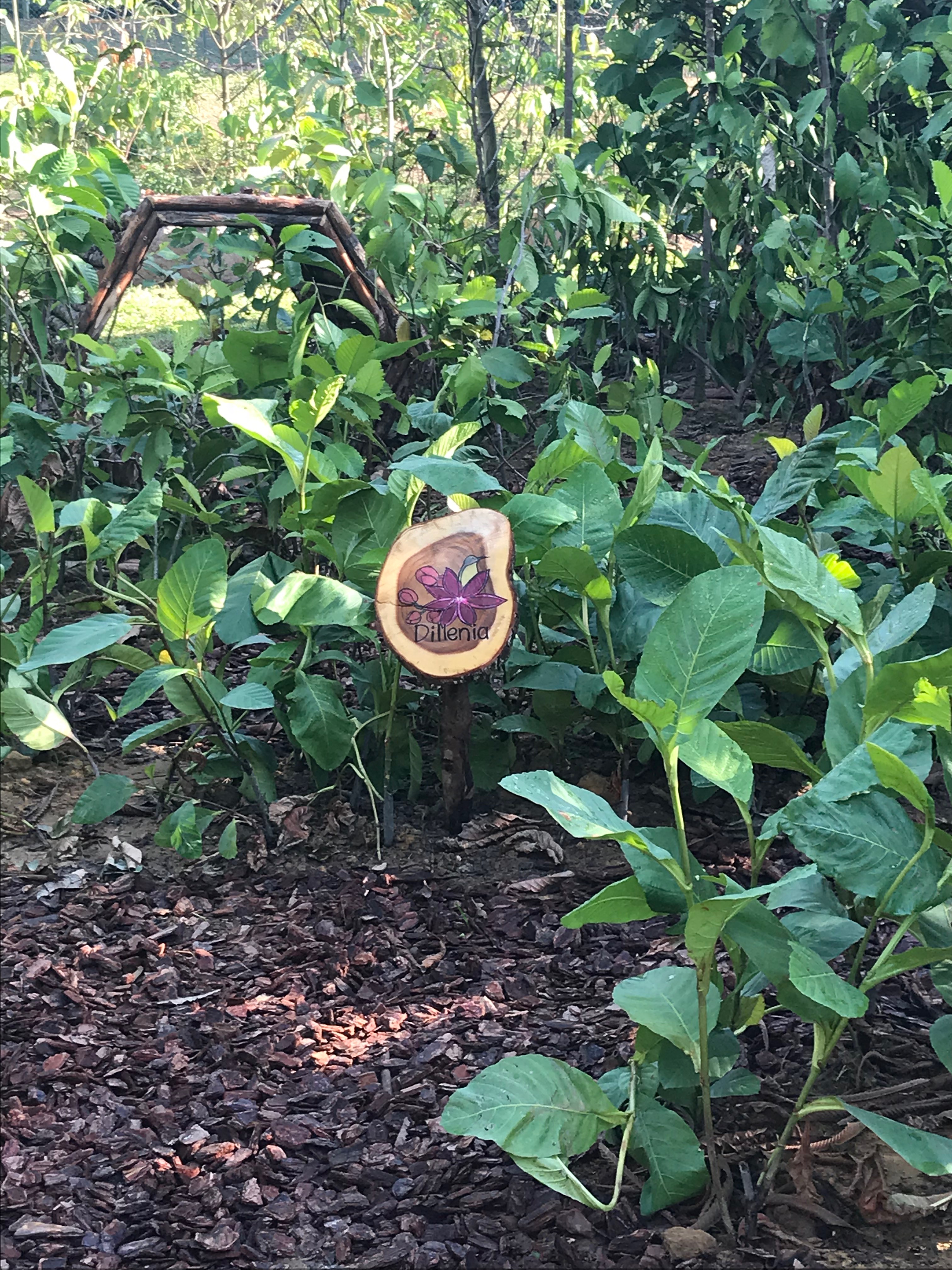
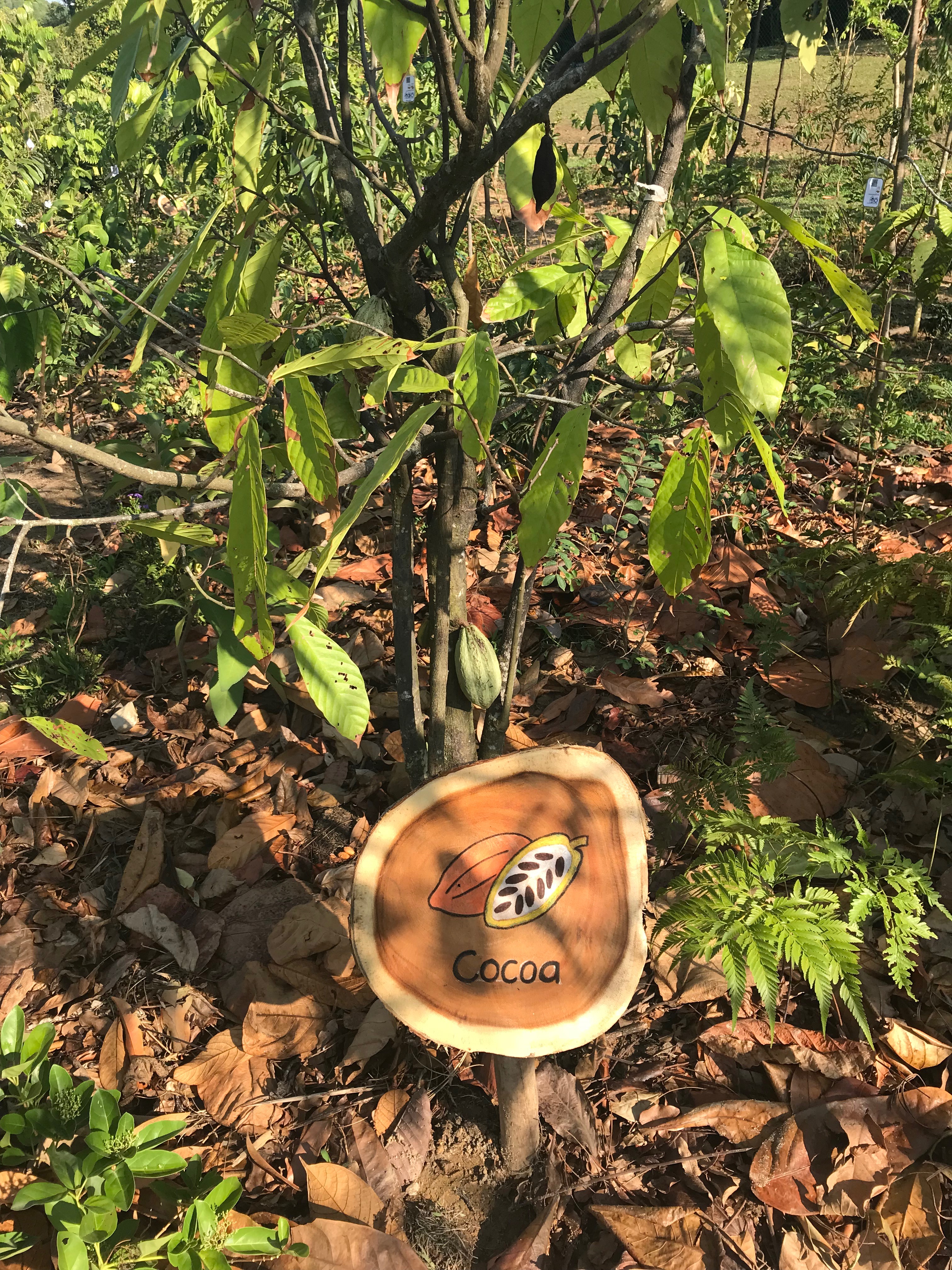
An NParks staff member told Mothership that the types of plants chosen for the playgarden were specially curated based on "interesting" features they had, which would stimulate children's' senses—for example, the Dillenia plant was chosen due to its uniquely textured leaves.
Nature-inspired features made from upcycled materials
Unlike the plastic slides and metal bars children may be familiar with in other playgrounds, almost all of the nine play features found in the playgarden are made from reused or recycled natural materials.
Examples include timber, bamboo, sand and rope.
Here are some photos of the features.
A small water fountain made out of logs:
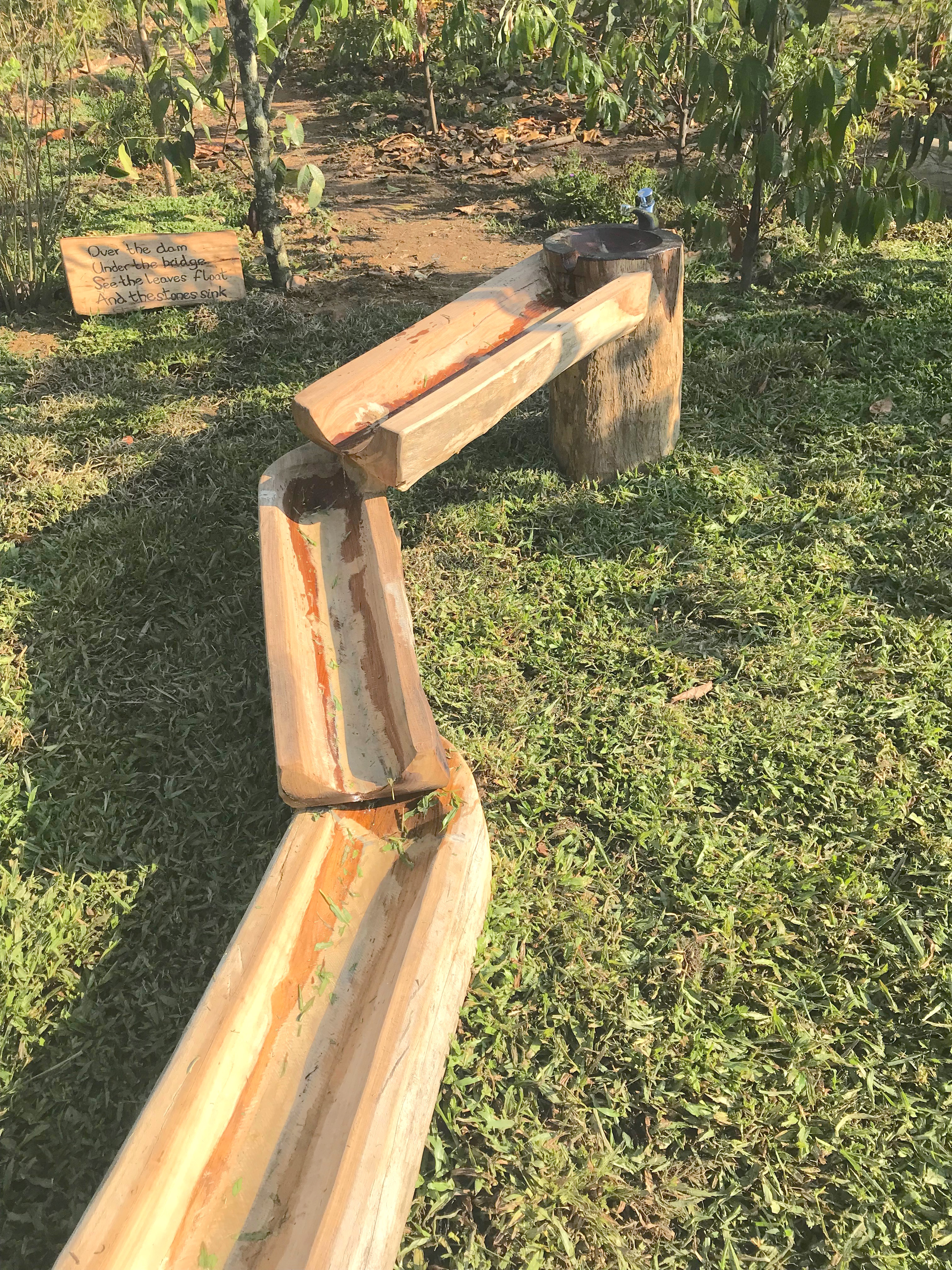
Teepee huts made out of sticks for the children to hide in:
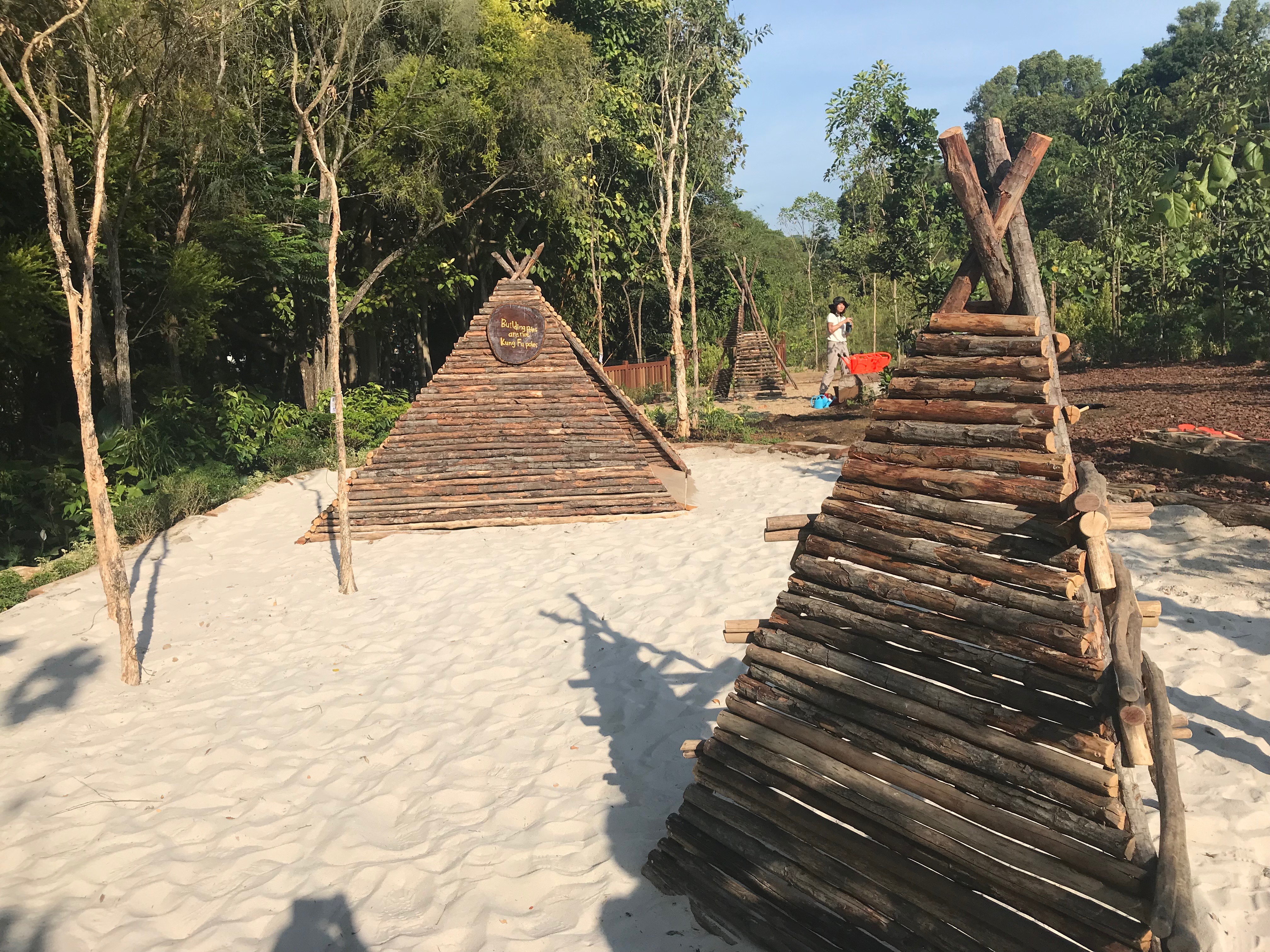
"Stools" made out of old logs for children to rest on:

And a walkway with planks naturally inlaid into the soil:
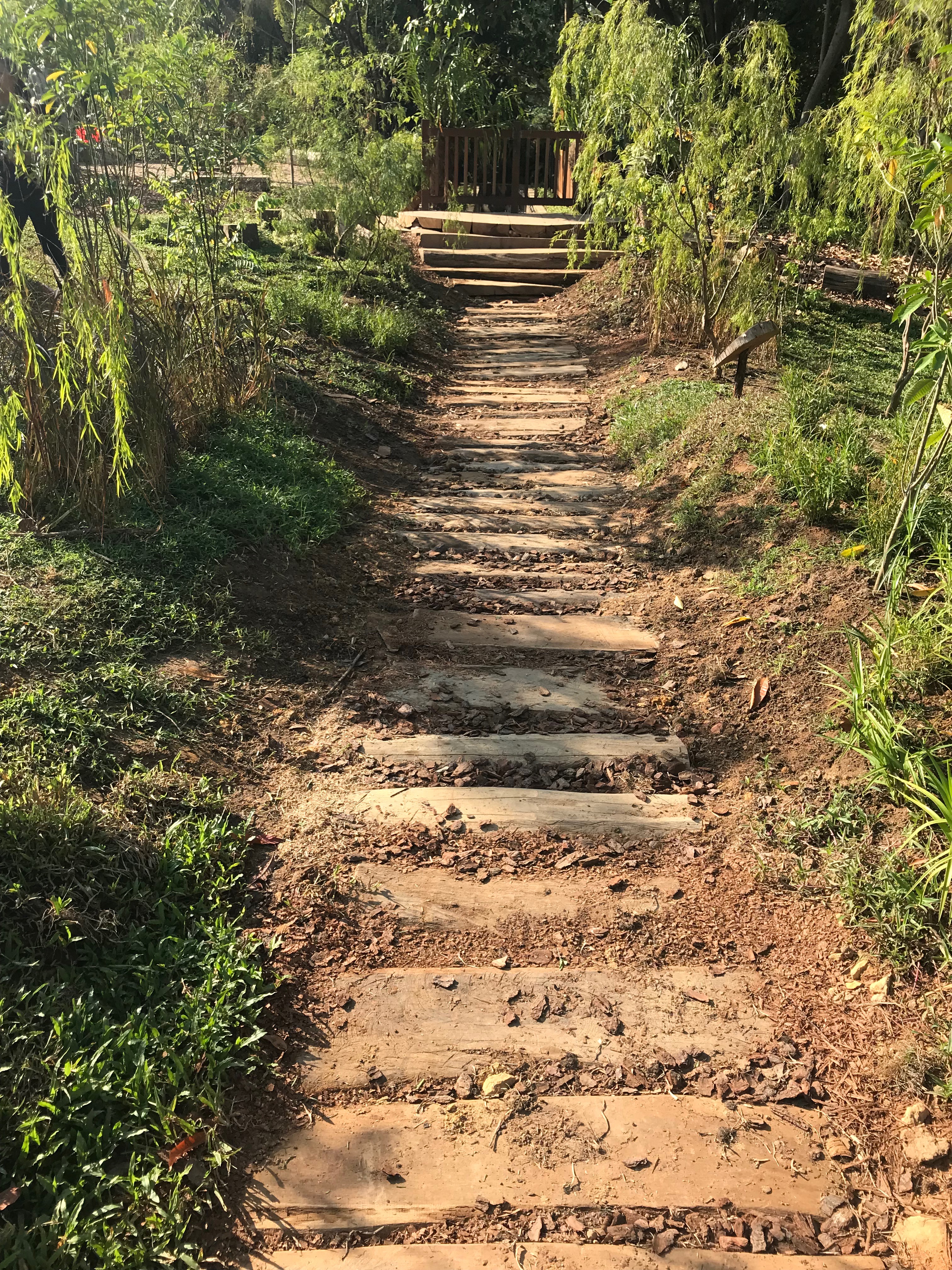
The only feature that does not fully utilise old materials is a canopy structure, which contains steel reinforcements beneath an outer layer of wood to ensure it does not cave in.
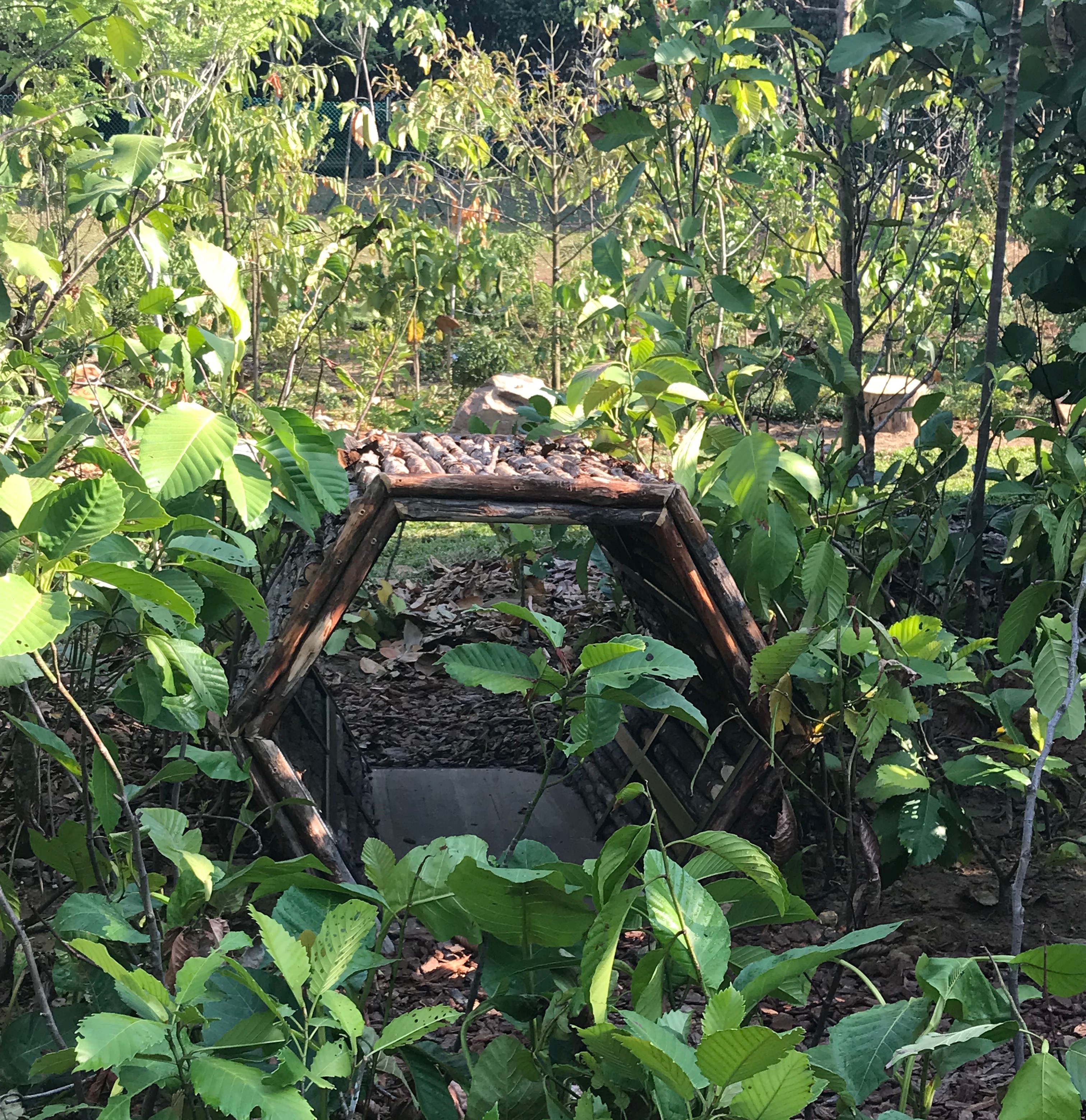
Instead of concretising the area, the paths are also filled in with wood chips instead.
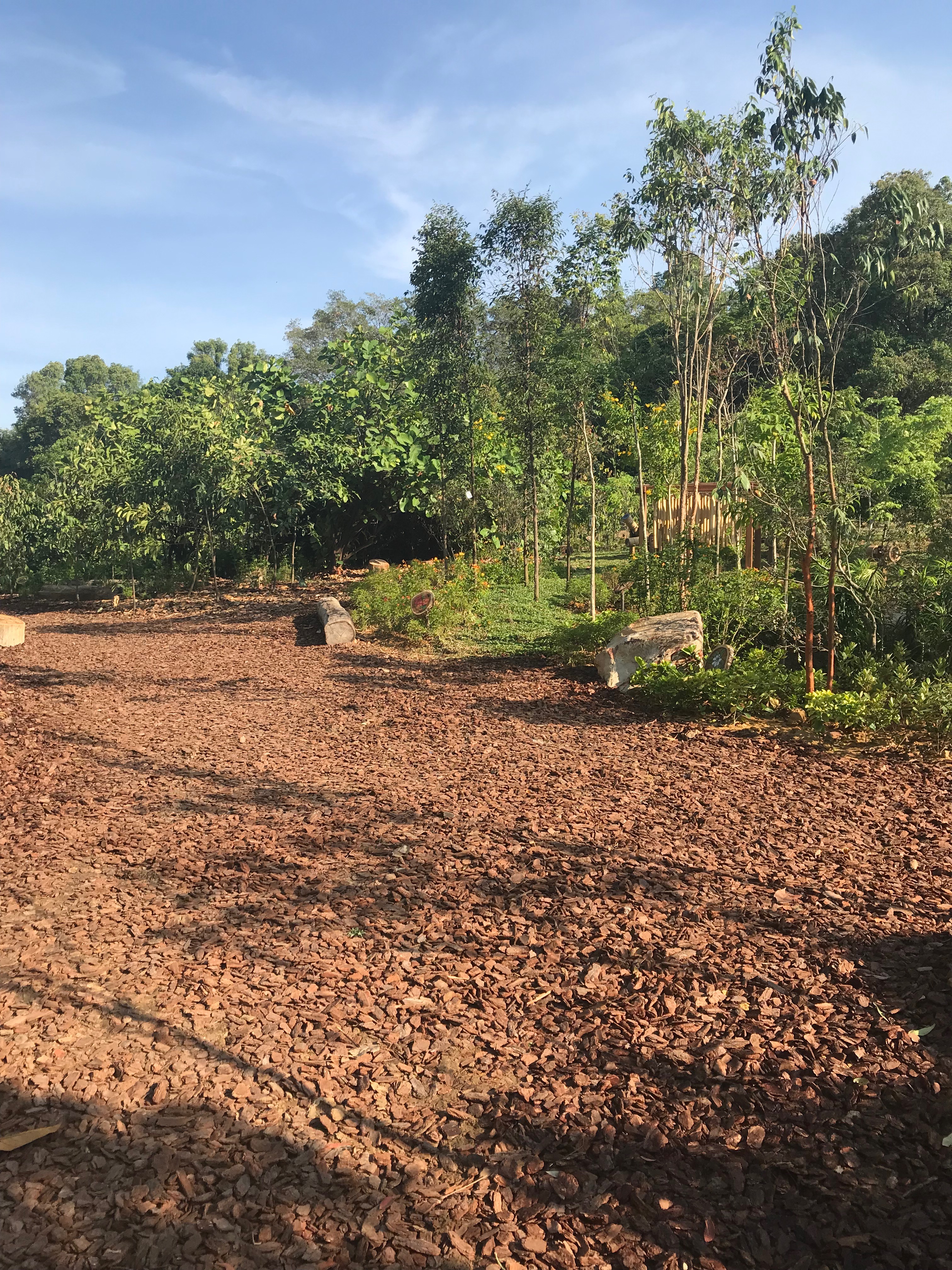
Improving children's learning skills
Not only does the playgarden help to inculcate a love for nature, NParks said the numerous interactive play features are designed to improve children's cognitive skills and sensory stimulation.
The sticks on the wooden teepee huts are removable, allowing children to express their creativity through modifying the "walls" of the hut.
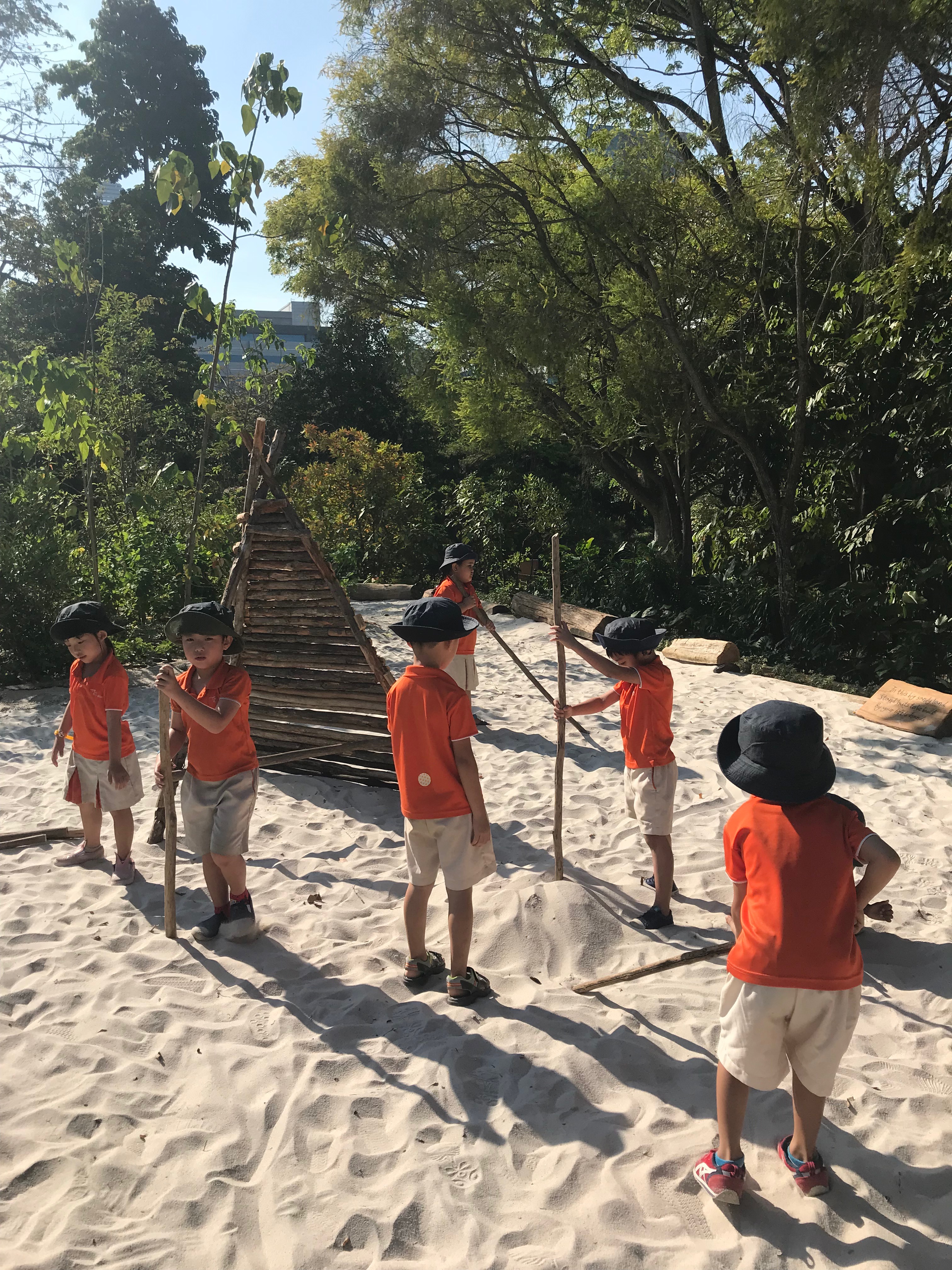
Children can also stimulate their senses by playing with the "musical instruments" in the playgarden.
Bamboo poles are strung up to resemble the traditional angklung instruments, and children can run beneath to produce hollow chimes.

The spinning feature below contains actual saga seeds.
[video width="1080" height="1920" m4v="https://static.mothership.sg/1/2019/03/IMG_5653.m4v"][/video]
Another interesting feature is a wooden structure with a magnifying glass on the top surface.
Children can place small objects beneath to observe its intricacies up close.
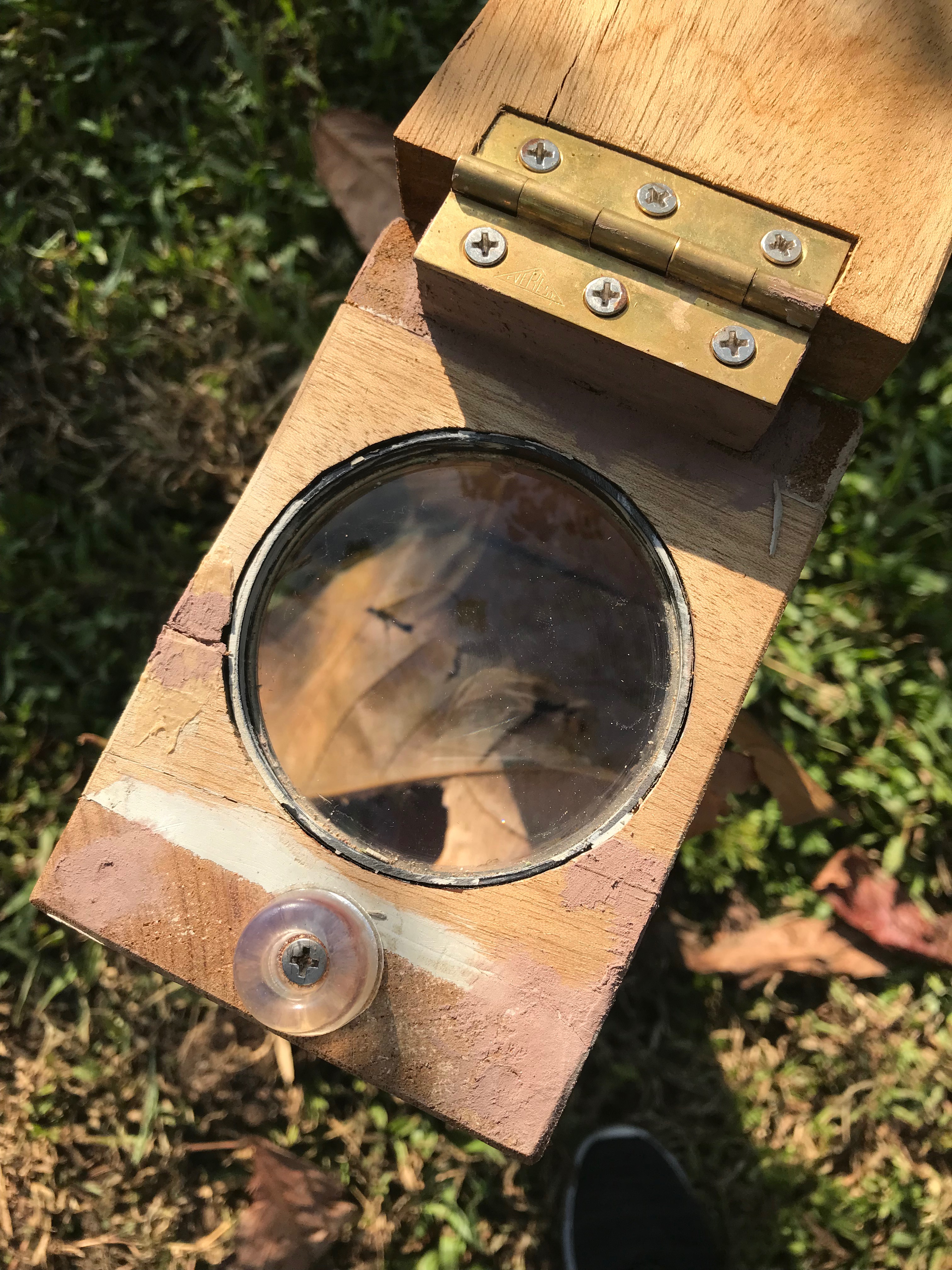
The usual, more sterile landscape of urban playgrounds is absent here.
The terrain is uneven, with logs and stepping stumps for children to climb over and explore.
According to NParks, the organisation hopes that this will enable the children to "develop a sense of adventure and discovery".
A test site for behavioural research
Aside from simply being a fun, stimulating environment for children, HortPark's Nature Playgarden also serves as a testbed for research.
By early 2020, NParks intends to release a set of design guidelines on biophilic playgardens that will help aid preschool educators, government agencies and other developers in their construction and development.
As part of the Biophilic Playgarden Plan, NParks will consult with the Early Childhood Development Agency (ECDA) and the National Institute of Early Childhood Development (NIEC) to develop these guidelines.
Tan Jun Chao, director of park planning at NParks said: "[We want to see] how the children engage the particular play feature. Do they behave according to the design guidelines [we formulated]?"
"If not, what are the lessons we can learn to tweak [the guidelines and features] and make it better?"
Research assistants will also be stationed at the playgarden to observe how children interact with its features, added Tan.
"Its important that the design guidelines are replicable and scalable," said Lee.
Future playgardens
Currently, other parks like the Jacob Ballas Children's Garden and Admiralty Park have play areas integrated with nature elements.
NParks plans to redevelop and enhance other existing parks to include more biophilic playgardens.
Maybe something to add to the itinerary for future school or family excursions.
Top photo by NParks and Ashley Tan
All other photos by Ashley Tan
If you like what you read, follow us on Facebook, Instagram, Twitter and Telegram to get the latest updates.
